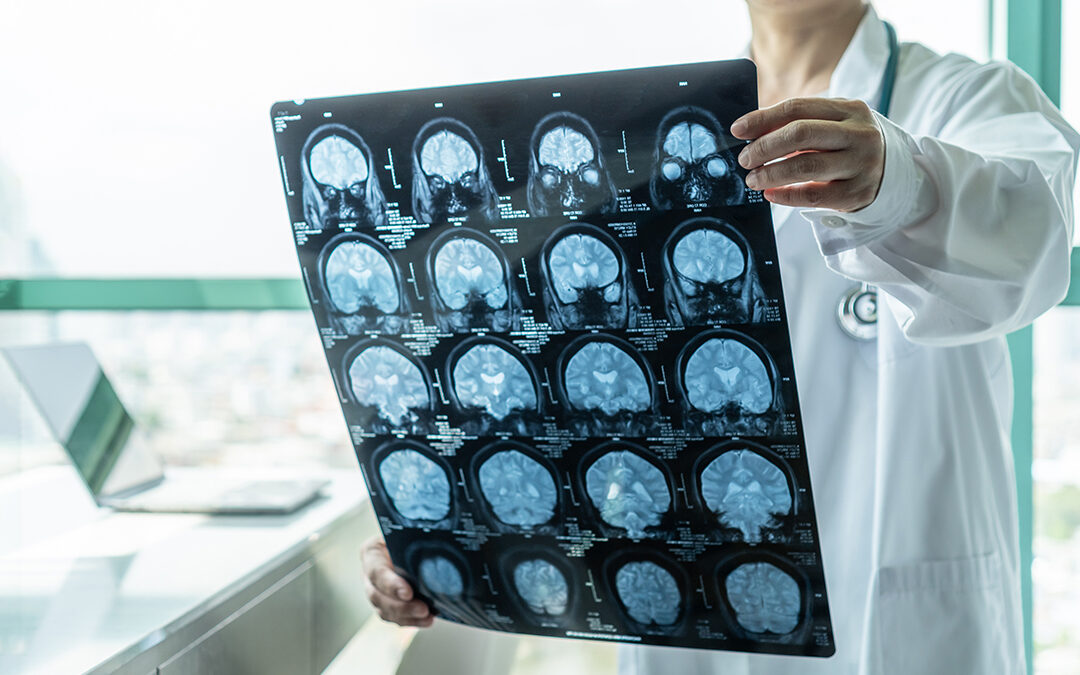Ischemic Stroke
Ischemic strokes are the most common, making up about 87% of all strokes. This type of stroke occurs when a blood vessel to the brain becomes blocked by a blood clot. Blood clots can occur as a result of plaque buildup on the walls of the blood vessels (cerebral thrombosis), or they can form somewhere else in the body and travel to the brain (cerebral embolism). One of the leading causes of cerebral embolism is atrial fibrillation.
Hemorrhagic Stroke
This type of stroke is caused by a leak or rupture in a blood vessel. There are two types of hemorrhagic stroke: intracerebral and subarachnoid. The first type is a bleed within the brain, and the second type is a bleed in the area around the brain. Approximately 13% of all strokes are hemorrhagic. They are usually caused by an aneurysm or very rarely by an arteriovenous malformation (AVM).
An aneurysm occurs when a weakened area in a blood vessel balloons, often at a branching point of an artery. Aneurysms can be caused by brain trauma, drug use, infections and some types of blood vessel disorders. If the aneurysm ruptures, blood can leak into the area surrounding the brain and into the brain itself. Uncontrolled high blood pressure is the most common reason for an aneurysm to rupture. Although, some medications and drugs that act as stimulants or blood thinners can also cause a rupture.
An AVM is a tangle of arteries and veins that disrupts normal blood flow. Most people with an AVM were born with the disorder. Although, AVMs are not generally hereditary. More than half of people with an AVM will have an intracranial hemorrhage.
Transient Ischemic Attack (TIA)
A transient ischemic attack is also called a “mini-stroke.” This is because this type of stroke only blocks blood flow temporarily (usually for five minutes or less). While this is not considered a major stroke, it is a serious medical event requiring emergency care, as there is no way to tell the difference between a TIA and a major stroke when symptoms occur.
TIAs are most commonly caused by blood clots. Unlike ischemic strokes, the clot is dislodged or dissolves on its own, and symptoms are short-lived. An estimated 10% to 15% of patients who have a TIA will have a major stroke within three months, making treatment to address the cause of stroke essential.
Risk factors for TIA include high blood pressure, cardiovascular disease, diabetes and smoking.
Other Types of Stoke
Although ischemic, hemorrhagic and transient ischemic attacks are the most common types of stroke, there are also a few other types:
- Cryptogenic stroke describes a stroke caused by a blood clot where no cause for the clot can be determined.
- Brain stem stroke occurs in the brain stem. Unlike other types of stroke, it can affect both sides of the body.
- Silent cerebral infarction (SCI) is a “silent stroke” where a patient does not have any symptoms or know they had one.
The most common risk factors for stroke include:
- Previous stroke or TIA
- High blood pressure
- Heart disease
- High cholesterol
- Diabetes
- Sickle cell disease
Lifestyle changes that can reduce your risk for stroke include:
- Not smoking
- Eating a healthy diet
- Getting regular physical activity
- Maintaining a healthy weight
- Limiting alcohol intake
The team at Advanced Cardiovascular Specialists consists of North Louisiana’s leading experts in cardiovascular care. For more information or to schedule an appointment, please call our office at (318) 798-9400.

